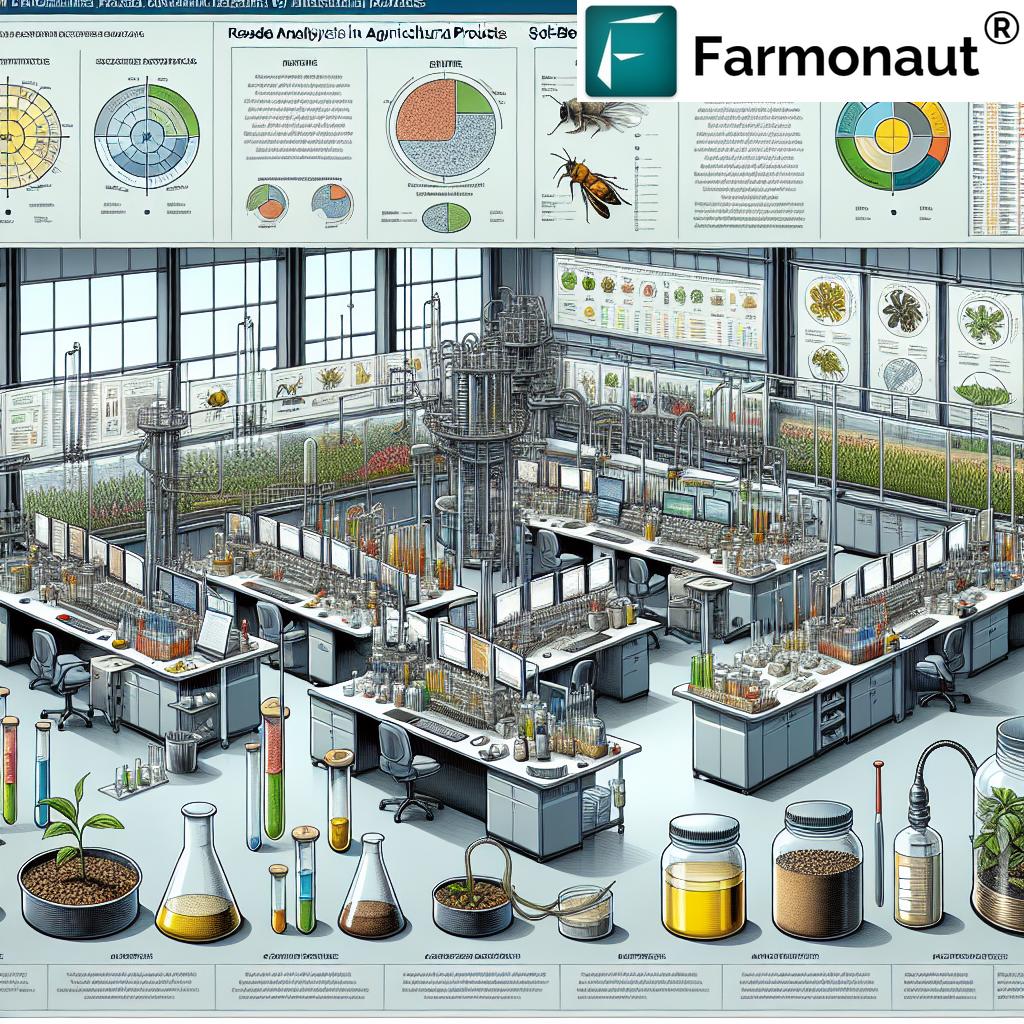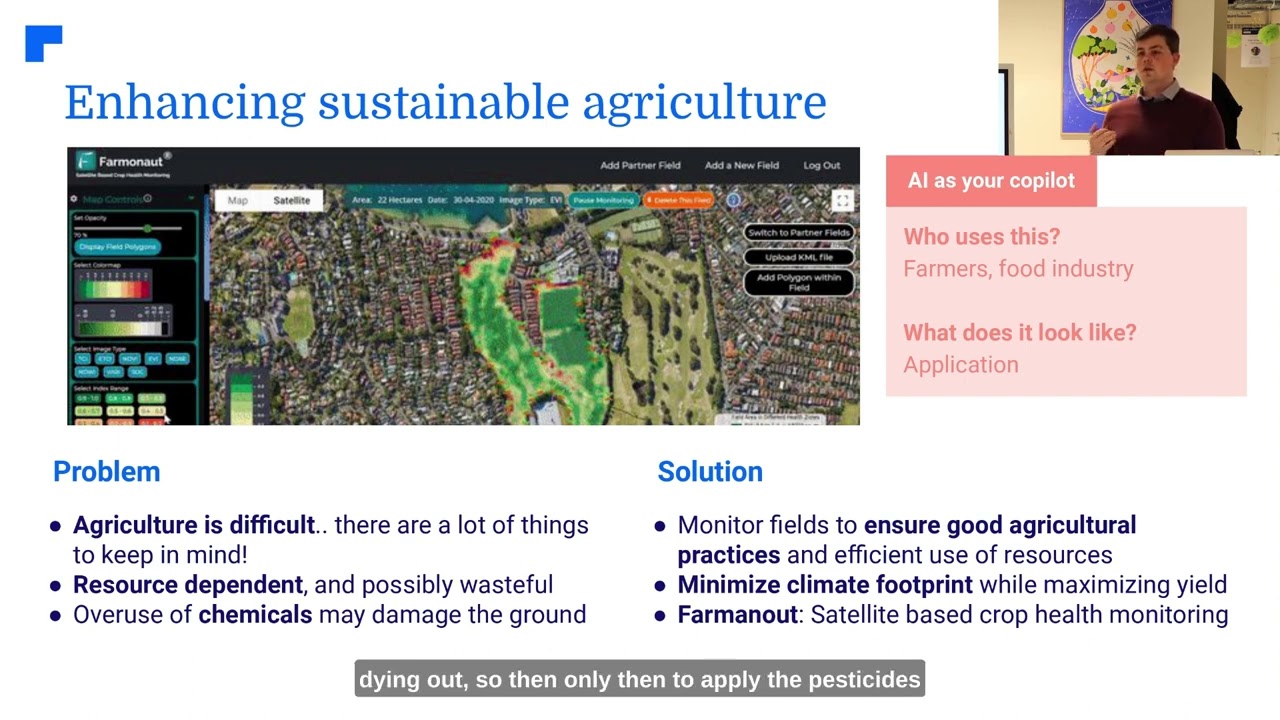Are Agricultural Biologicals Safe? 7 Key Safety Facts for Sustainable Farming
“Over 60% of farmers report improved soil health after switching to agricultural biologicals and biofertilizers.”
Agricultural biologicals – including biopesticides, biofertilizers, and biostimulants – are rapidly transforming how we approach sustainable farming alternatives for improved soil health and crop productivity. But as their use spreads across farming and forestry landscapes worldwide, a critical question arises:
Are agricultural biologicals safe for humans, the environment, and our food systems?
With growing regulatory scrutiny and a global shift towards eco-friendly, natural alternatives to synthetic chemicals, understanding the efficacy, safety, and impact of these biological products is more important than ever. This comprehensive guide explores the seven essential safety facts every stakeholder—from farmers to researchers, consumers to policymakers—needs to know about agricultural biologicals.
Along the way, we detail the science behind biopesticides testing protocols, present a comparative safety facts table, answer your core questions, and share how Farmonaut leverages cutting-edge digital agri-technologies to drive responsible biologicals adoption for a healthier planet.
Understanding Agricultural Biologicals: Biopesticides, Biofertilizers & Biostimulants
Agricultural biologicals are products derived from organisms and natural substances designed to improve crop productivity, enhance soil health, and sustainably manage pests and diseases. Embracing these sustainable farming alternatives can help reduce our dependency on synthetic chemicals while improving food security and environmental outcomes.
Let’s break down the major categories of agricultural biologicals and their mechanisms of action:
-
Biopesticides: Used to control pests via natural mechanisms. Three main types:
- Microbial Pesticides: Utilize living bacteria, fungi, or viruses to target specific pests and diseases. E.g., Bacillus thuringiensis is used to manage caterpillar outbreaks.
- Biochemical Pesticides: Contain naturally occurring substances such as pheromones (alter pest behavior), plant extracts, or growth regulators.
- Plant-Incorporated Protectants (PIPs): Genetically engineered plants that produce toxic substances to control specific pests internally.
-
Biofertilizers: Products containing beneficial microorganisms that improve soil fertility by:
- Fixing atmospheric nitrogen, making it available to plants.
- Decomposing organic matter for richer, more productive soil.
- Mobilizing or solubilizing nutrients such as phosphorus or potassium.
Biofertilizers for soil health play a significant role in reducing fertilizer residues and promoting crop sustainability.
-
Biostimulants: Non-nutrient substances or microorganisms that stimulate natural processes in plants to:
- Boost nutrient uptake
- Increase stress tolerance
- Enhance plant growth and yield
Biostimulants in agriculture are pivotal for improving crop resilience and soil structure.
Unlike chemical inputs, agricultural biologicals are designed to work synergistically with soils, crops, and the broader ecosystem, offering significant advantages for sustainable agriculture.
7 Key Safety Facts About Agricultural Biologicals
The expanding adoption of biological inputs means robust evaluation is vital to ensure human health, environmental responsibility, and effective food production. Let’s examine the seven most critical safety facts every farmer, policymaker, and consumer should know:
Safety Fact 1: Biologicals Are Generally Safer Than Chemical Pesticides
- Many agricultural biologicals are less toxic to humans and non-target organisms compared to synthetic chemicals.
- They typically degrade rapidly in the environment, reducing the chances of harmful residues on food.
- According to OECD guidelines, new biopesticides must be properly evaluated to ensure microorganisms and their metabolites are not pathogens or toxins to mammals or other likely-exposed organisms.
- This makes them a safer solution—when used correctly and with proper oversight.
Safety Fact 2: Efficacy Can Vary by Environmental Conditions and Practices
- The effectiveness of biologicals can depend on weather, soil conditions, application methods, and timing.
- Even highly effective microbial biopesticides may show reduced performance under less-than-ideal field conditions, requiring standardized protocols for optimal use.
- Robust biopesticides testing protocols are essential for reliable evaluation, consistent performance, and farmer confidence.
Safety Fact 3: Residue Analysis Ensures Food Safety
- While biologicals typically leave reduced residues, regulatory agencies require residue analysis in agricultural products to guarantee marketability and safety.
- This analysis ensures that consumers are protected from unexpected toxicity or allergenicity.
Safety Fact 4: Most Biologicals Are Biodegradable and Environmentally Friendly
- Environmental impact of biologicals is usually positive—they degrade rapidly and help in restoring soil health, encouraging biodiversity.
- However, there are potential risks from introducing non-native microorganisms which could disrupt local ecosystems; hence, environmental assessments are mandatory.
Safety Fact 5: Regulatory Frameworks Vary by Region
- Testing, approval, and monitoring frameworks (e.g., by the US EPA or the European Union) ensure that only safe and effective products reach farmers.
- Lack of standardized protocols across regions/markets can block broader adoption.
Safety Fact 6: Farmer Training Is Essential to Safe Use
- Education and hands-on training help farmers apply biologicals correctly, avoiding misuse/overuse and maximizing benefits.
- Surveys show knowledge gaps; over 90% of smallholder farmers in Ethiopia, for example, did not see biologicals as inherently safer alternatives, highlighting the need for targeted information campaigns.
Safety Fact 7: Adoption Is Growing—But Awareness Must Keep Pace
- The global biopesticides sector already accounts for nearly 15% of the crop protection market.
- With more farmers adopting biologicals, there is a critical need for robust support in education, regulation, and accessible technologies (such as Farmonaut’s carbon footprinting tools).
“Biopesticides now account for nearly 15% of the global crop protection market, reflecting rising adoption of safer alternatives.”
Safety Considerations: Human Health, Environmental Impact, and Efficacy
Are agricultural biologicals safe? The answer is nuanced—it depends not only on the products themselves but on how they are developed, evaluated, applied, and monitored.
- Human Health: Biologicals offer substantial improvements over synthetic chemicals by generally being less toxic, degrading rapidly in food and the environment, and having low residue potential. However, risks do exist if products are not properly assessed (see OECD guidelines).
- Environmental Impact: Most biopesticides and biofertilizers improve biodiversity, enhance soil health, and support ecological balance. Still, there are cautions: non-native microorganisms (microbial products) may disrupt some local ecosystems.
- Efficacy and Residues: Testing is crucial to guarantee reliable performance across diverse farming environments and to ensure any residues fall within safe limits. This protects both farmers and consumers.
Comprehensive evaluation, field-based studies, and feedback from actual farmers guide the responsible integration of biologicals into our food systems and farms.
Regulatory Frameworks for Biopesticides and Biofertilizers: Ensuring Standards and Safety
The regulatory landscape for agricultural biologicals is dynamic and multifaceted. Regulatory frameworks for biopesticides and related categories aim to ensure only safe, thoroughly tested, and effective products enter the market.
How Are Agricultural Biologicals Tested and Approved?
- In the United States, the Environmental Protection Agency (EPA) oversees biopesticides registration and residue analysis in agricultural products, requiring proof of safety for humans, non-target species, and the environment.
- European Union regulations harmonize approval procedures for biopesticides and biostimulants to ensure high safety standards across member states.
- Testing protocols vary—gaps in standardized protocols can impede global product adoption.
-
There is an urgent need for:
- Mutual recognition of testing data between regulatory agencies
- Clearer, science-based standards for product evaluation
- Universally applied metrics for biopesticides testing protocols
(report)
As sustainable farming alternatives gain momentum, regulatory alignment will play a pivotal role in shaping market access, ensuring compliance, and supporting farmers adoption of biologicals.
Farmers’ Adoption of Biologicals: Challenges & Opportunities
The widespread adoption of agricultural biologicals depends on many factors—cost, perceived efficacy, knowledge, access, and support. Let’s delve deeper:
Key Challenges
- Lack of Standardization: Without standardized biopesticides testing protocols, confidence in product performance is lower, and market entry is slower.
- Economic Concerns: Initial costs for some biological products may be higher than chemical alternatives, especially for smallholder farmers.
- Awareness Gaps: Many farmers are unaware that biologicals can offer safer, effective crop protection and soil health, as demonstrated in adoption studies from Africa and Asia.
- Training and Education: Field demonstrations, accessible literature, and technology-based advisory tools are essential to support correct use.
Opportunities for Growth
- Education: Comprehensive awareness campaigns, integrating digital tools and farmer networks.
- Accessible Technologies: Innovative platforms such as Farmonaut’s farm management solutions—which offer real-time monitoring and advisory systems—enhance biologicals integration.
- Long-Term Benefits: Enhanced soil health, reduced pesticide resistance, improved yields, and greater sustainability offset initial costs.
-
Financing and Traceability:
Financial institutions now use farm verification for loans & crop insurance, improving farmer access to inputs and incentivizing sustainable practices. Corporates rely on product traceability for transparent and resilient supply chains.
As technology and regulatory standards evolve, the pace of farmers’ adoption of biologicals will continue to accelerate.
Integrating Biologicals into Conventional Farming Systems
Integrating biologicals into conventional farming represents a key pathway to a more resilient, sustainable agricultural future. Here’s how farmers are combining both worlds for the maximum effect:
- Rotation and Blending: Using biologicals alongside reduced rates of conventional chemicals can delay pest resistance, lower environmental impact, and maintain productivity.
- Targeted Application Methods: Technologies such as Farmonaut’s precision monitoring platform help pinpoint pest outbreaks for site-specific application, reducing unnecessary input use.
- Data-Driven Decisions: Farmonaut also provides carbon footprinting metrics, helping farmers track emissions reductions when adopting more sustainable inputs.
- Blockchain-Based Traceability: Ensuring transparency through the blockchain-powered supply chain tools, appealing to buyers and certifiers of eco-friendly products.
These advances are helping agricultural biologicals transition from niche products to core components in modern, climate-smart farms.
Farmonaut: Advancing Sustainable Agriculture with Technology
At Farmonaut, we believe that integrating sustainable alternatives like agricultural biologicals with advanced digital solutions will shape a resilient future for farming and forestry. Here’s how our platform empowers all agricultural stakeholders:
-
Real-Time Satellite-Based Crop Health Monitoring:
Our multispectral satellite analytics allow for targeted assessment of vegetation health, soil moisture, and even pest risks, enabling precise biological application methods. -
AI-Powered Advisory:
Our Jeevn AI delivers weather-informed, real-time, actionable recommendations, so farmers can adjust their use of biopesticides, biofertilizers, and biostimulants for optimal productivity and soil health. -
Blockchain Supply Chain Tools:
With our blockchain traceability solution, every step, from inputs to final food product, remains transparent and verifiable—vital for certified organic and biological practices. -
Fleet & Resource Management:
Optimize resource use, reduce input waste, and avoid unnecessary chemical exposure through satellite-tracked logistics. -
Carbon Footprinting:
Our real-time carbon tracking tools enable agribusinesses to monitor the environmental impact of biologicals and comply with sustainability certification standards. -
Large-Scale Farm Management:
Designed to support organizations, government bodies, and cooperatives, our admin platform delivers cross-farm analytics for enhanced biologicals integration. -
API Access for Developers:
Our API and
developer documentation allow scalable, programmatic access to satellite and weather data supporting new digital solutions for biological input management.
By bringing actionable, affordable technology to the heart of agriculture, we at Farmonaut empower farmers and enterprises alike to make informed decisions, lower risks, ensure compliance, and accelerate safe, sustainable food production worldwide.
Safety Fact Summary Table
| Safety Fact | Description | Estimated Impact | Estimated Adoption Rate |
|---|---|---|---|
| 1. General Safety | Biologicals are less toxic and degrade faster than synthetic chemicals; lower risk of food and soil residue. | High for human safety, positive for soil health | ~20-30% globally (varies by region) |
| 2. Efficacy Variation | Effectiveness depends on environmental conditions and proper application protocols. | Moderate on crop yield and disease control | 15-35% (estimated) |
| 3. Residue Control | Regulatory agencies require residue analysis for food safety assurance. | High for food safety, helps market access | Mandatory for export crops; ~40% in regulated markets |
| 4. Environmental Friendly | Biologicals are biodegradable and often enhance biodiversity; minimal soil accumulation. | High for soil health, ecosystem service improvement | ~60% of farmers using biofertilizers report soil improvement |
| 5. Regulatory Protocols | Frameworks differ by region; require standardized testing and thorough evaluation for approval. | Ensures overall safety, supports international trade | All exported biologicals must comply; adoption rising globally |
| 6. Farmer Training | Education on correct use is vital for safety and efficacy; reduces risk of misuse. | Improves safety for farmers & environment | Training initiatives cover 10-25% of smallholder farmers |
| 7. Growing Adoption | Biopesticides now comprise nearly 15% of crop protection markets worldwide. | Significant positive effect on sustainable agriculture | 15%+ market share (and growing annually) |
FAQ: Are Agricultural Biologicals Safe?
Are agricultural biologicals safer than conventional pesticides?
What are the limitations of using biologicals?
How are new agricultural biologicals tested for safety?
Can biologicals fully replace synthetic agrochemicals?
How can Farmonaut support the safe adoption of agricultural biologicals?
Are there risks to the environment when introducing microbial products?
Conclusion: The Future of Safe, Sustainable Agriculture Lies in Biologicals
Agricultural biologicals – spanning biopesticides, biofertilizers, and biostimulants – represent the future of responsible, sustainable agriculture. Their adoption promises healthier soils, safer food, and reduced environmental impact, but demands ongoing vigilance in testing, regulation, and education.
As the market matures and regulatory frameworks align, farmers can confidently adopt these superior solutions with the support of digital platforms like Farmonaut. By blending traditional wisdom, innovative technology, and eco-friendly products, we can achieve a sustainable agricultural future that nourishes both people and the planet.
For more on enhancing your operations with precision monitoring, traceability, and digital advisory for safe, sustainable biological input adoption, discover Farmonaut’s comprehensive solutions today.
Reduce environmental impact with carbon footprinting tools






















